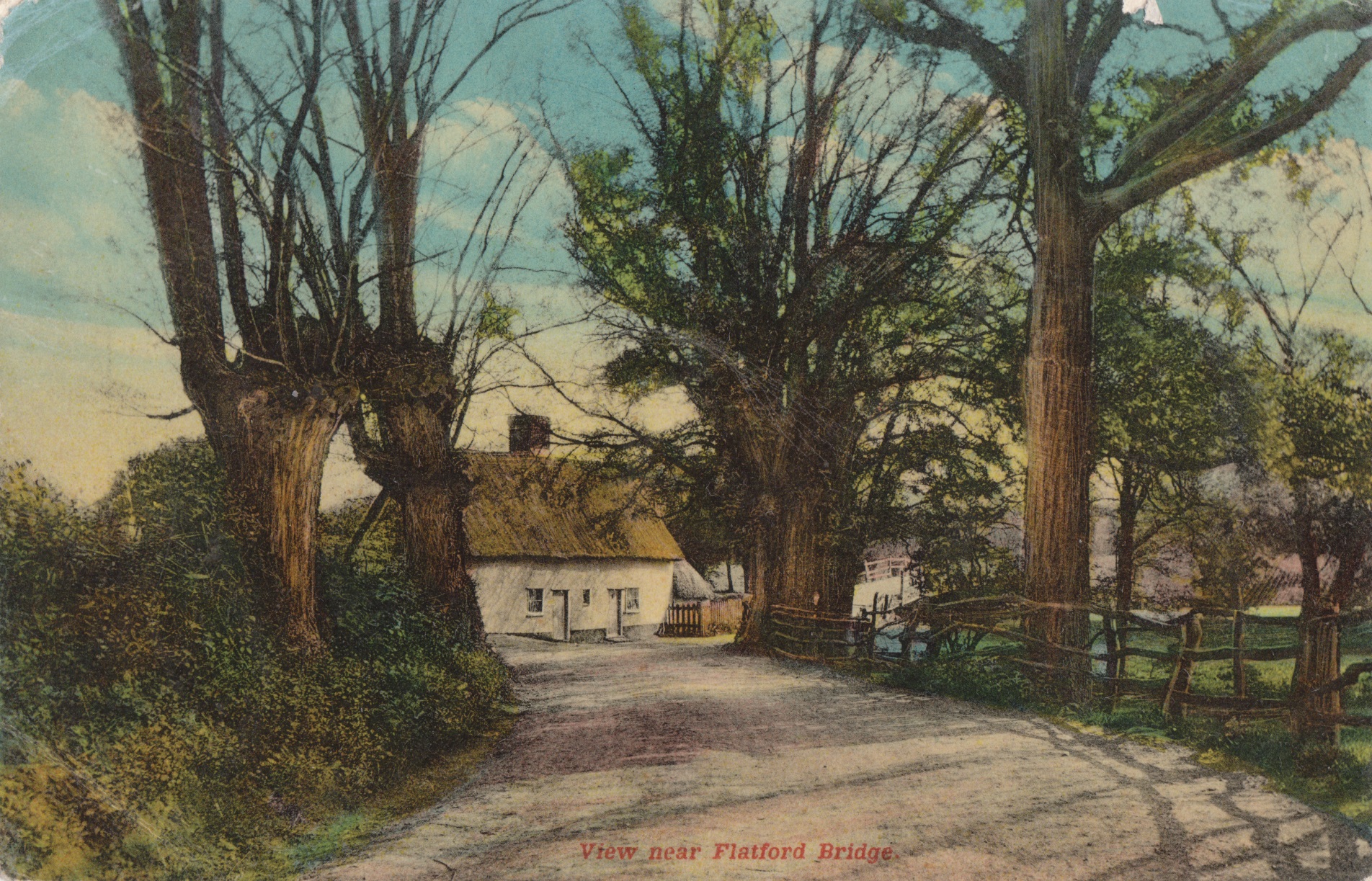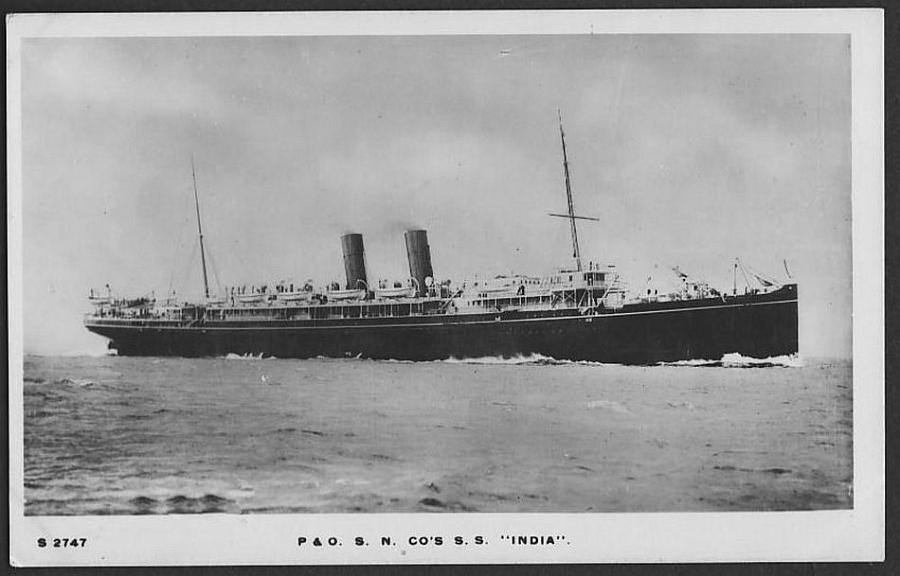Felix Clarke (1878 - 1915)
Brother of Edward Clarke. Starting as a Boy Seaman, Felix served 12 years in the Royal Navy before transferring to the Royal Fleet Reserve when he became a civilian. Recalled to active service upon the outbreak of War in August 1914, Felix was killed the following year when his ship was torpedoed by a German U-Boat.
- 20
- Died in the Great War
- 51.959774, 1.019878
Details
| Name: | Felix William Clarke |
| Service: | Royal Navy |
| Ship: | H.M.S. India |
| Service Number: | 184591 |
| Rank: | Able Seaman |
| Date of Death: | 8th August 1915 |
| Age: | 37 |
| Buried: | Plot I, Row A, Grave 1, Fredrikstad Military Cemetery, Fredrikstad, Norway |
Family Background and Early Life
William Felix Clarke – or Felix as he was usually called – was born on 27th March 1878, in East Bergholt, quite possibly in Bridge Cottage at Flatford. 1 Felix’s birth was registered in the name of William Felix Clarke, and his name on the 1881 Census is shown as William F. Clarke. But that seems to be the last record showing his first name as William. From the time he started school in 1882, his name is stated in all records as either Felix Clarke or Felix William Clarke.
Felix’s parents Isaac and Emmeline Clarke, had moved to the village in 1876 from Bradfield in Essex. Isaac, who was originally from Lawford, was a Miller by trade. He had married Emmeline Dorman from Little Oakley in 1872, and together they would have 12 children, of whom Felix was one of the eldest. For most of Felix’s childhood the family lived in Bridge Cottage at Flatford, before they moved up to Burnt Oak in the early 1890’s.
When he was 4, Felix started at the village school at Burnt Oak Corner. After he left school – which he seems to have done when he was 13 – Felix was employed for a time at a local Bakery. However, at age of 17 he joined the Royal Navy as a Boy Seaman. In order to do so, his parents had to sign a declaration that Felix would serve in the Navy as an adult for a minimum period, which was usually 12 years.
When he was 18, Felix ceased to be a Boy Seaman, and was given the rating of Ordinary Seaman. From his surviving Service Papers, we know that by this time Felix was 5 foot 5 inches tall, with Light brown hair, blue eyes and a fresh complexion.
The majority of Felix’s time in the Navy was spent serving on the battleships, HMS Hood, HMS Venerable and HMS Irresistible in the Mediterranean, though he did also serve for a year on the cruiser HMS Galatea in home waters.
Felix was serving on HMS Hood during the Greco-Turkish War of 1897, when she was one of the vessels which were part of the International Squadron. The Squadron was formed of vessels from a number of the Great Powers in order to blockade the island of Crete, which was then in the midst of a native Greek rebellion against Ottoman rule, and try to protect their citizens there.
Civillian Life
Felix became a civilian again after his 12 years Continuous Service in the Royal Navy ended in March 1908. Throughout his service, Felix’s character had been consistently rated a Very Good.
He then volunteered to join the Royal Fleet Reserve, whose purpose was to provide a reserve of trained men for service in the Fleet in time of emergency. This meant that Felix would have to perform one week’s drill each year at his Home Port of Chatham, In return, he would receive a retainer of 6d a day, and – after completing 20 years combined service in the Royal Navy, and Royal Fleet Reserve – a gratuity of £50
After he left the Navy, Felix moved to Marylebone in London, and found employment with the Post Office, initially as a Postman, and later as a Porter.
On 31st January 1909, he was married to Emily May Parry, at St Matthews Church Marylebone. Emily, who was originally from Gloucestershire, was five years younger than Felix, and brought a young daughter called Dorothy to the marriage.
The Clarke family later moved to Paddington, just off the Edgeware Road, and it was whilst they were there that Felix and Emily had a daughter whom they named Winifred, born in 1911. Winifred was followed the year after by a son called Albert and in 1913 by another daughter, called Alice.
Felix and his family moved to East Bergholt for a short period at the end of 1913, when he was employed as a Factory Hand. They lived at Burnt Oak – possibly with Felix’s widowed mother, and his youngest brother Edward. 2 Felix’s father, Isaac had died in 1910, at the age of 64. In the Great War, Edward Maurice Clarke served as a Private in the Essex Regiment. He was wounded during the 2nd Battle of Ypres in May 1915, whilst serving with the 2nd Battalion. Subsequently transferred to the 11th Battalion of the Essex Regiment, Edward was serving with them when he was wounded again in September 1916, during the Battle of the Somme. He died of his wounds at a hospital in Rouen, on 6th October 1916, aged 22. Edward is buried in the communal cemetery of St. Sever Cemetery in Rouen, and is also commemorated on the East Bergholt War Memorial. Felix and the family appear to have left the village in January 1914, and returned to Paddington.
Recall to Active Service
As a member of the Royal Fleet Reserve, Felix was recalled to active service on 2nd August 1914, as part of the mobilisation of the Royal Navy during the heightened tensions that preceded Britain’s declaration of War on Imperial Germany. He was initially posted to HMS Sutlej, an old cruiser, which was assigned to convoy escort duties.
In the following April, Felix was transferred to HMS India. This ship was in fact the S.S. India – a steam passenger liner operated by the P&O shipping line. She had been hired by the Admiralty in March 1915, and with the addition of a number of guns, was converted to an armed merchant cruiser.
HMS India was to form a part of the 10th cruiser squadron, whose role was to help maintain the British naval blockade of Germany.
On Sunday 8th August 1915, HMS India was on patrol off the Norwegian coast above the Arctic Circle, tasked with intercepting iron ore carriers sailing from the port of Narvik, bound for Germany. Earlier that day she had stopped and searched a Swedish ship, which was a suspected blockade runner.
At 5.40 that afternoon, the alarm gong was sounded after a torpedo track was seen approaching. The torpedo, which had been fired by the German submarine U22, could not be avoided and struck HMS India’s starboard side aft, near the No.3 gun. The ship immediately started to settle by the stern, though she was still underway at the time.
Of the seven available lifeboats, one capsized and four others were fouled or stove in. The ship sank in five minutes, leaving a large number of men in the water. 3 HMS India sank approximately 22 miles northwest of the Norwegian coastal town of Bodo. 120 of the crew lost their lives in the sinking, the survivors were picked up and landed in Norway (which was a neutral country) where they were interned.
Felix’s body was washed up on the Norwegian coast, and he was buried in the Lodingen Churchyard in Norway, close to where HMS India had sunk.
Postscript
At the time of Felix death, they were expecting another child. On 4th December 1915, Emily gave birth to a son who she named Felix Walter Clarke.
Emily Clarke remarried in 1917, and moved to Devonport. However, the children were split up, with both Dorothy and Winifred being accepted by the Brixton Orphanage for Fatherless Girls.
In 1961, as part of a move by the Commonwealth War Graves Commission to concentrate a number of small burial grounds from all over Norway, Felix body was exhumed and reburied. He now rests in the Fredrikstad Military Cemetery, which is located approximately 40 miles south of Oslo.
Copyright © Mark Ashmore, 2024
- 20
- Died in the Great War
- 51.959774, 1.019878



